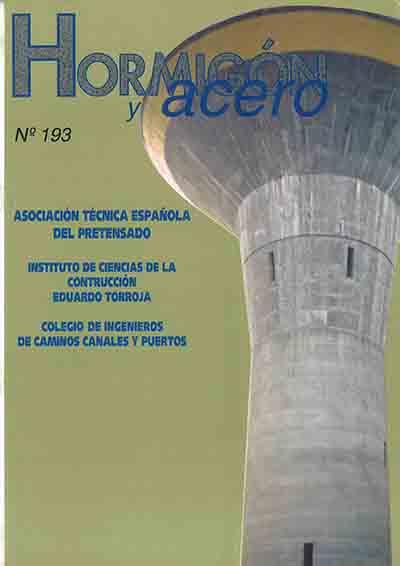Aproximaciones analíticas del comportamiento en el tiempo de puentes continuos de hormigón construidos mediante elementos prefabricados
Resumen
Las estructuras de hormigón cuya construcción supone cambios de esquema estructural experimentan normalmente redistribuciones de esfuerzos a lo largo del tiempo, por causa de la fluencia y la retracción; por otro lado, siempre que se produce una evolución en la sección se dan también redistribuciones internas de tensiones. Estos efectos, no despreciables en general, han de considerarse en el análisis. La concepción de un particular tipo de puentes en España, basado sobre todo en un sistema constructivo que da lugar a tales evoluciones, requirió desarrollar un procedimiento ajustado para su adecuado análisis en el tiempo. En estos puentes el tablero está compuesto en principio por elementos prefabricados, unos de hormigón pretensado y otros de hormigón armado, a los que se une en obra una losa superior de hormigón armado y se da continuidad longitudinal. Ello centra el presente trabajo, donde se desarrollan aproximaciones analíticas sencillas, complementarias del anterior, para evaluar dichas redistribuciones diferidas. Tales aproximaciones, que en principio sirvieron para contrastar el mencionado procedimiento (basado un modelo un tanto complejo), tienen de todas formas un interés por sí mismas en la etapa de dimensionamiento dentro del proyecto. Las aproximaciones se agrupan en dos amplios casos ligados a las acciones implicadas en la fluencia: acciones de tipo mecánico (cargas permanentes) y acciones geométricas (retracción). Por otra parte, los dos casos de estas aproximaciones se aplican a un ejemplo concreto de puente de tres vanos, obteniendo así resultados prácticos (en especial, la redistribución de esfuerzos en el tiempo). Finalmente, se apuntan diversas conclusiones sobre el alcance de las mismas, en particular las relativas a su aplicación al proyecto del tipo de puentes estudiado.

